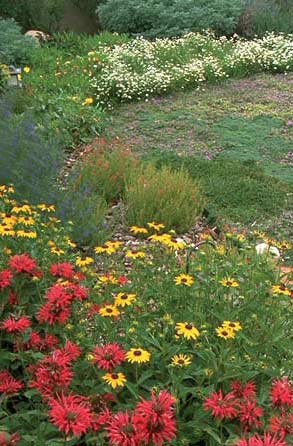Santa Fe Permaculture is a landscape consultation and design company started in 1992.
Our mission is to create beautiful, functioning landscapes that are low in maintenance and high in yields.
Our utilization of permaculture techniques and principles sets us apart from all of the conventional landscaping companies in the so-called 'green' industry.
Please also check out Backyard Digest, Nate Downey's blog, for more information about both permaculture philosophy and related methods and techniques. Essentially, it's an evolving archive of Nate's published writings about permaculture.
What is Permaculture?
In the early 1970's, before the word "sustainable" had taken hold, Australian Ecologist Bill Mollison combined the words "permanent", "culture" and "agriculture" into one contraction: "Permaculture." A permaculture is any sustainable society, and it is essential to understand that there can be no such society without a sustainable system of agriculture.
It is important to say that permaculture is really nothing new. Its principles can be applied to a variety of disciplines including landscaping, home design, community planning even economics.
Ethics form the Foundation of Permaculture.
Care for the Earth
Care for the People
The first two ethics mirror each other. We care for the earth, because we depend on her for our survival. We care for people, in part, because if people's needs are not cared for, people will have little desire or ability to care for the earth.
Re-invest Surplus
In An Introduction to Permaculture, the third ethic is described by Mollison as "The contribution of surplus time, money and energy to achieve the aims of earth care and people care."
Natural Patterns
An essential aspect in the teaching and learning of permaculture is understanding natural patterns. Once these patterns are recognized and understood, they can be applied to design.
Patterning is how to use these patterns effectively in a system. Essentially, it is a means of working cooperatively with nature. Some of the patterns in nature that permaculturalists use are: Spirals, Branches, Concentric Circles, Explosions, Waves, Layers, Lagoons, Holes, Webs and many more.
All of these must be seen as moving through time and space such that they are never static. They must always be understood as being part of a greater pattern, which in some meaningful way both contains and releases them.





